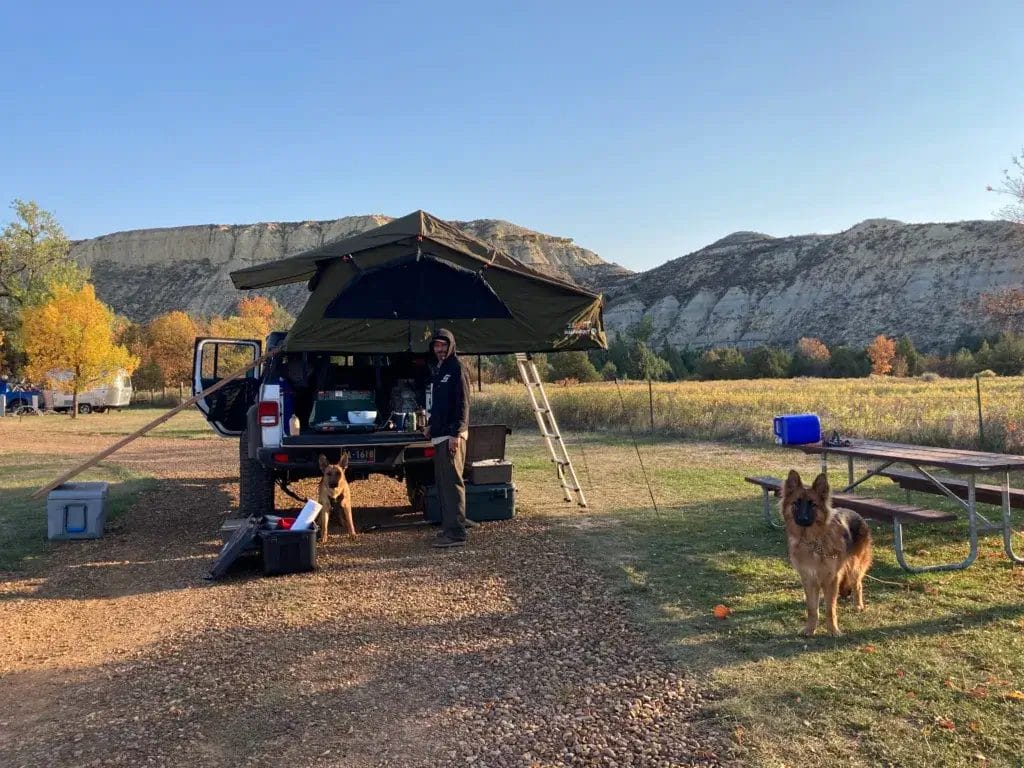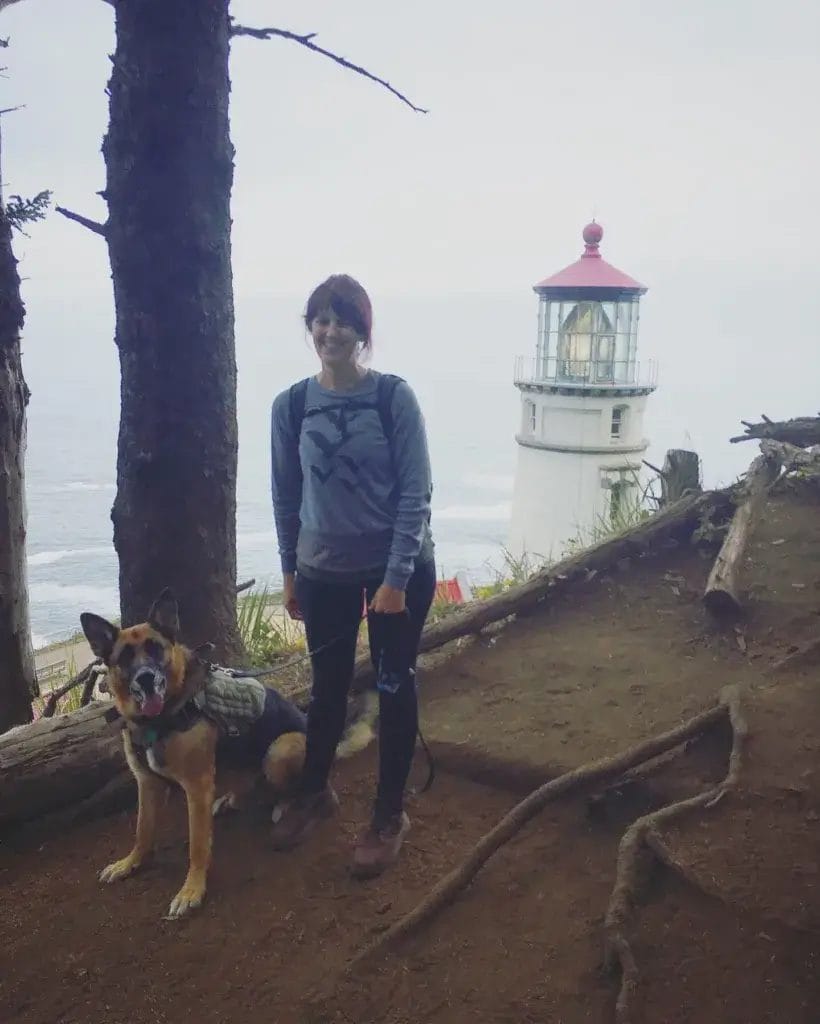Camping With a Dog: Essential Tips
Taking your dog camping creates unforgettable memories and strengthens your bond in ways that regular walks simply can’t match.
To camp successfully with your dog, you’ll need some to do some advance preparation. This includes packing essential gear like a leash, portable water bowls, and dog-specific camping equipment.

The great outdoors offers endless opportunities for adventure with your four-legged friend. From exploring new trails to stargazing by the campfire, these shared experiences build trust and deepen your connection. We’ve learned that choosing the right campsite makes a huge difference in how much fun both you and your pup will have.
Before heading out on your first camping trip together, remember that your dog relies on you for safety and comfort in this new environment. With some basic planning and the right mindset, camping with your canine companion can become one of your favorite ways to spend time together in nature.
Key Takeaways
- Pack essential gear and extra food to keep your dog safe and comfortable during the camping trip
- Choose pet-friendly campsites and follow local rules to ensure a smooth outdoor experience
- Maintain a consistent routine while camping to help your dog feel secure in the new environment
Choosing Your Camping Destination
Picking the right spot for camping with your dog means finding places that welcome pets and match your adventure style. We need to split our search into pet-friendly campsites and local parks with dog rules.
Finding Dog-Friendly Campsites
Many campgrounds welcome dogs, but we need to do our homework first. We recommend using recreation.gov to search for pet-friendly sites at national parks and forests.
Look for campsites away from busy areas – your pup will feel more relaxed. We’ve found that less crowded campgrounds work best, especially during off-peak seasons.
Some features to look for:
Clear paths for walks
Shaded spots for hot days
Safe terrain for paw pads
Distance from other campers
Access to water sources
Understanding Regulations at National and Local Parks

Each park has its own dog rules, and we must know them before we go. Many parks require leashes and have specific areas where dogs can and can’t go.
Common regulations we need to check:
- Leash length requirements (usually 6 feet max)
- Off-limits areas like certain trails or beaches
- Waste cleanup rules
- Quiet hours when dogs should be calm
We should always bring proof of vaccinations and keep our dogs’ tags visible. Some parks might ask to see these documents when we check in.
Pre-Trip Preparations
Taking your dog camping requires planning ahead to make sure both you and your furry friend have a fun and safe adventure. We’ve learned through many camping trips that the right prep work makes all the difference.
Ensuring Your Dog’s Vaccinations Are Up to Date
We always check our dogs’ vaccination records to make sure they’re current, especially for rabies. It’s not a bad idea to bring copies of medical records and vaccination certificates with you.
Keep your dog’s ID tags updated with current contact info. We recommend having your pup microchipped as an extra safety measure. Make sure the contact information on the microchip is up to date too!
Pack any medications your dog needs, plus basic first aid supplies like:
- Antiseptic wipes
- Bandages
- Tick removal tools
- Pet-safe antibiotic ointment
Packing the Essentials for Your Dog
We’ve found it helpful to use a dedicated backpack for dog supplies. Pack enough food for the entire trip plus an extra day’s worth to be safe.
Essential items include:
- Food and water bowls
- Treats for training opportunities
- Poop bags
- Favorite toys
- Brush or comb
- Dog bed or blanket
- 6-foot leash and backup leash
A light-up collar or reflective gear helps keep track of your pup after dark.
Preparing Your Dog for Different Weather Conditions
Summer camping requires extra water and shade protection. We bring a cooling mat and portable fan for hot days.
For cold weather, pack:
- Dog jacket or sweater
- Insulated sleeping pad
- Paw protection balm
- Towels for drying off
Watch for signs of overheating or shivering. Let your dog acclimate to new temperatures gradually.
Reviewing Leash Laws and Campsite Rules
We always research campground rules before arrival. Many places require dogs to stay on a leash at all times.
Know the length limits for leashes – usually 6 feet maximum. Some trails and areas might be off-limits to dogs.
Check if there are specific quiet hours or restrictions on where dogs can be walked. Keep proof of vaccinations handy – many campgrounds require this documentation.
Setting Up Camp
Creating a comfortable and secure campsite keeps both you and your pup happy during your outdoor adventure. Getting the setup right makes a huge difference in how much fun everyone has.
Picking the Right Spot for You and Your Dog
We like to scout for a flat, shaded area away from other campers. Your dog needs a secure space to roam, so look for spots with trees where you can set up a tie-out line.
Check the ground for sharp rocks or sticks that could hurt paw pads. A grassy area is ideal for comfortable walking and lounging.
Set up your tent where your dog can see you from their designated spot. This helps them feel secure and prevents anxiety when you’re doing camp tasks.
Dog-Specific Camping Gear

A cozy dog bed inside your tent gives your pup their own special sleeping space. We love bringing an extra blanket for added comfort.
Essential gear for your camp setup:
- Long tie-out line and stakes
- Collapsible water bowl
- Popup shade tent for hot days
- LED collar light for nighttime visibility
- Outdoor dog bed or sleeping pad
Place water bowls in shaded spots to keep them cool. We set up different “zones” at our campsite – one for eating, one for sleeping, and one for playing. This helps our dogs understand the camp routine better.
PIN IT FOR LATER!
Keeping Your Dog Safe and Healthy
Taking your pup camping requires extra preparation to handle medical issues that might come up in the wilderness. We need to protect against bugs, prevent overheating, and be ready for minor injuries.
Protecting Against Fleas, Ticks, and Other Bugs
We always make sure our dogs have proper flea and tick prevention before heading into the woods. Apply treatments at least 24 hours before the trip.
I keep a pair of tweezers in our first aid kit to remove any ticks we find during our daily tick checks. Check your dog’s ears, belly, and between their toes.
Bug Protection Checklist:
- Flea and tick preventative medication
- Bug repellent safe for dogs
- Light-colored clothing for easier tick spotting
- Regular tick checks morning and night
Preventing and Managing Heat Stroke in Dogs
Heat stroke can happen fast when camping in warm weather. We always bring extra water and a collapsible bowl for frequent drinks.
Warning Signs of Heat Stroke:
- Excessive panting
- Drooling more than usual
- Bright red gums
- Weakness or collapse
If your dog shows these signs, move them to shade immediately. Wet their paws and belly with cool (not cold) water. Never use ice water as it can cause shock.
First Aid for Dogs
We pack a special doggy first aid kit for every camping trip. It helps us handle minor injuries until we can reach a vet.
Essential First Aid Items:
- Vaccination records
- Any current medications
- Pet-safe antibiotic ointment
- Benadryl (check with your vet for dosage)
- Hydrogen peroxide
- Sterile eyewash
- Self-adhering bandages
- Cotton swabs
- Styptic powder for nail injuries
Keep your dog’s microchip information updated before the trip. I store the closest emergency vet numbers in my phone, just in case.
Daily Routines and Hiking with Your Dog
Setting up routines while camping helps keep your pup happy and safe in the great outdoors. When hitting the trails, we need to balance adventure with structure to make sure our four-legged friends stay healthy and energized.
Maintaining a Consistent Schedule
We’ve found that sticking to daily routines at camp helps our dogs feel secure in new environments. Feed your pup at the same times you would at home, using their regular dog food.
Keep water bowls filled and easily accessible throughout the day. If you plan on hiking, we recommend bringing extra portions of food since hiking burns more calories.
Morning and evening potty walks should happen on schedule. Always clean up after your dog to protect the environment and be considerate of other campers.
Exploring Trails and Keeping Your Dog Engaged

Building up your dog’s stamina before big hikes is essential. Start with shorter trails. Then, gradually increase distance as your pup gets stronger.
Always keep your dog on a leash. It’s safer for everyone and often required by law.
Pack plenty of treats to reward good behavior and maintain energy levels.
We like to take frequent water breaks, especially on warm days. A collapsible bowl makes it easy to keep our pups hydrated on the trail.
Let your dog stop and sniff occasionally. These mental breaks are just as important as physical exercise.
Watch for signs of fatigue like excessive panting or slowing down.
Respectful Camping with Your Dog
Being considerate campers with our four-legged friends means taking care of the environment and keeping nature safe for everyone to enjoy.
Managing Waste Responsibly
We always pack plenty of waste bags for our camping trips. It’s not fun to run out halfway through!
We make it a habit to clean up after our dogs immediately and carry the bags until we find a proper trash can.
Never bury dog waste or leave bags on trails. Forgotten bags harm the environment and ruin the experience for other campers.
We keep a dedicated “waste bag holder” attached to our dog’s leash. This makes it super easy to grab a bag whenever needed.
Minimizing Impact on Wildlife and Environment
We keep our dogs on a leash at all times when camping. This isn’t just about following rules. It’s about protecting local wildlife and keeping our pets safe from dangerous encounters.
Our four-legged friends naturally want to chase wildlife, but we must prevent this. Even friendly dogs can stress out animals and disturb their natural behaviors.
We stick to marked trails and camping spots to avoid damaging plant life. When hiking, we teach our dogs to stay on the path with us.
At night, we keep our dogs close to prevent them from bothering nocturnal animals. A reflective leash helps us keep track of them in the dark.
Leaving No Trace with Your Canine Companion
Leave No Trace principles are super important when we take our dogs camping. We want to keep nature beautiful for everyone to enjoy!
Staying on marked trails helps protect plant life and wildlife. Our furry friends should walk right beside us, not forge their own paths through the wilderness.
Always clean up after our dogs! Bring plenty of waste bags and pack out everything. Pet waste can harm the environment and spread disease to wildlife.
Before heading out, we always trim our dog’s nails. Sharp nails can damage tree roots, picnic tables, and tent floors. Plus, shorter nails make hiking more comfortable for our pups.
We need to keep our dogs under control around other campers and wildlife. Not everyone loves dogs as much as we do, and some people might be scared or allergic.
Quick Tips for Low-Impact Camping:
- Keep dogs leashed in busy areas
- Pack out all waste in sealed bags
- Prevent excessive barking
- Stay on established trails
- Bring a portable water bowl to avoid damaging water sources
Camping Must-Haves for Your Dog

We always make sure to pack essential dog camping gear before heading into the great outdoors with our furry friends. Let’s look at what you’ll need to keep your pup safe and comfy.
First up is a sturdy leash – we recommend bringing a spare one too! A backup leash and carabiner can be real lifesavers if your main one gets lost or damaged.
Don’t forget about nighttime safety. We use light-up dog collars to keep track of our pups after dark. A good flashlight helps us spot them during those late-night potty breaks too.
Essential Gear List:
- Water bowl and extra drinking water
- Poop bags (pack more than you think you’ll need!)
- Flea and tick prevention
- Dog boots for rough terrain
- Dog sleeping bag or blanket
- Pet-safe bug spray
- Dog towels for cleanup
We always pack a basic first aid kit for our dogs, too. It’s better to be prepared and not need it than the other way around!
Remember to bring familiar items from home, like their favorite toy or bed. These comfort items help our dogs feel secure in the new camping environment.
Frequently Asked Questions
Taking our dogs camping means planning ahead and being prepared for safety, comfort, and fun in nature. My pup and I have learned lots of tips through trial and error that will help make your camping adventures amazing.
What are the essentials to pack for a camping trip with my pooch?
Essential camping gear for dogs includes a sturdy leash, portable water bowl, first aid kit, and plenty of food.
We always bring our pup’s favorite bed or blanket to give them a cozy spot to rest.
Don’t forget poop bags, any medications they need, and some familiar toys to keep them entertained.
Any tips for introducing my dog to the campsite life?
Start with short camping trips close to home to help your dog adjust gradually.
Let them explore the tent and camping gear at home before your trip. We like to make it fun with treats and praise.
Practice basic commands that will be important at the campsite, like “stay” and “come.”
How do I keep my doggie safe and secure while we’re enjoying the great outdoors?
Keep your dog leashed at all times unless in designated off-leash areas. This prevents them from approaching wildlife or wandering off.
Make sure their ID tags are up to date, and consider a GPS tracker for extra security.
Check them regularly for ticks and keep them away from campfire areas.
What’s the best way to make sure my dog stays comfy during our camping adventures?
Bring extra blankets or a padded sleeping surface – the ground can get cold at night.
Set up a shady spot at camp where they can rest during hot days.
Pack plenty of fresh water and a cooling vest if you’re camping in warm weather.
Are there specific breeds that are more suited to camping trips, or can any dog join in on the fun?
Any dog can enjoy camping with proper preparation and consideration for their needs.
Active breeds like retrievers and shepherds often take naturally to outdoor adventures.
Older dogs or those with health issues may need extra comfort items and shorter activity sessions.
What are some dog-friendly camping spots we should check out for our outdoor excursions?
Many KOA campgrounds welcome dogs and offer special pet areas.
National Forests typically allow dogs on trails and in campgrounds, but always check local rules first.
Make sure to look for campgrounds with fenced dog parks or swimming areas where pups can play safely.








